#north ronaldsay
Text
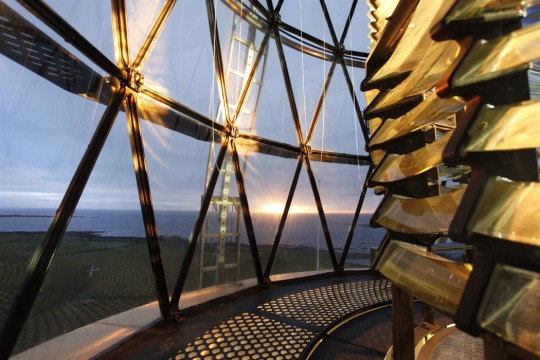
From Britain's tallest lighthouse you can see Fair Isle & the Shetlands
#New Lighthouse#North Ronaldsay#Orkney Islands#Scotland#Fair Isle#Shetlands#Great Britain#North Sea#ocean#UK
56 notes
·
View notes
Text

Ever since I first learned about this breed of sheep and their peculiar diet, I've wanted to get a hold of their wool. See how it's effected.
2 notes
·
View notes
Photo
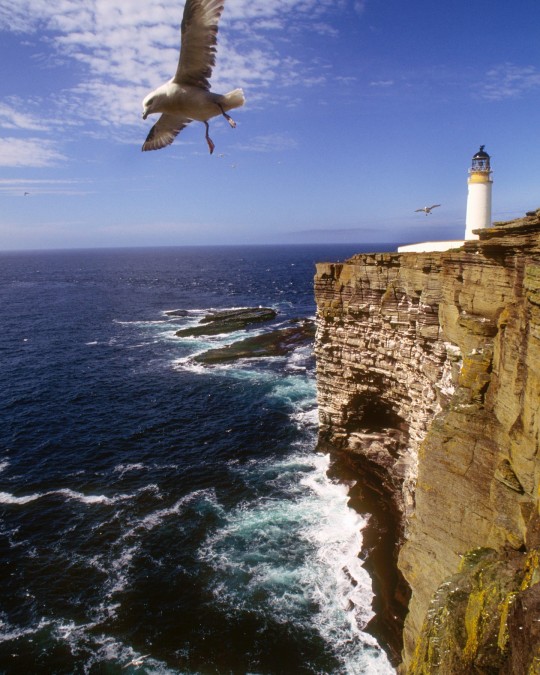
Scotland Fix of the Day: The coasts of Scotland are spectacular but treacherous. The towering cliffs and submerged reefs were wrecking ships and killing sailors for centuries before the Northern Lighthouse Board started building the lighthouses that we here today just expect to grace scenes of nautical splendor like Noup Head (built 1898) on Westray in Orkney. Amazingly one family – the Stevensons – was responsible for the design and building of 82 of the most spectacular lighthouses. Right now I'm reading their story in the excellent book, The Lighthouse Stevensons by Bella Bathurst. The scion of the family was Robert Stevenson, who in 1789 as a young engineer, assisted his father-in-law in building the Dennis Head Old Beacon on North Ronaldsay in Orkney. It was classically beautiful but a poor aid to stormswept sea captains. But in the succeeding decades his innovations set the standard for lighthouse design and construction, not just in Scotland but around the world. Over the years I have (like many travelers) been drawn to these fantastic structures built at such cost to in remote locations. Neist Point on the Isle of Skye is one, built in 1909 by David Alan Stevenson (Robert's grandson), features perhaps the most spectacular setting of any. Another, at the Butt of Lewis (built 1860s by David Stevenson, Robert's son) guards hazardous cliffs. And Cape Wrath, seen form my cabin porthole as we rounded Scotland's northern headlands, refers not to vengeful terrain but the Norse word for a "turning point", one that would take them home. (Robert 1828.) Fair Isle South (1892 by David and Charles) was bombed in WWII. Altogether I find the Stevenson's story both compelling and daunting, like a myth from a lost world. Like a place you might find in a tale by Robert Louis Stevenson who shunned the family business to write books. #scotland #heather #highlands #bestofscotland #hiddenscotland #thehighlandcollective #scotland_highlights #ig_scotland #visitscotland #scotlandgreatshots #scottishhighlands #scotland_greatshots #igersscotland #unlimitedscotland #scotlandtrip #scotlandtravel #thescottishcollective #simplyscotland #moodyscotland #scotlanddreams #orkney — view on Instagram https://ift.tt/tbBcf5G
86 notes
·
View notes
Text
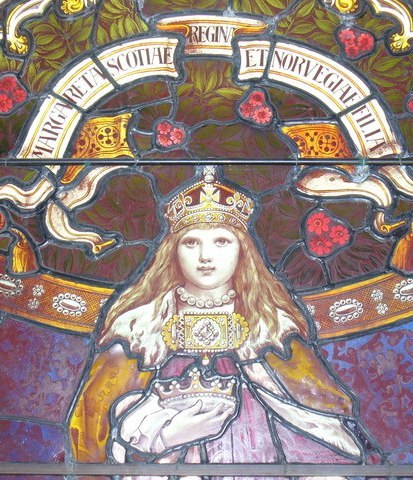
April 9th 1283 saw the birth of Margaret, Maid of Norway.
Margaret was called Queen but was never crowned. She was known as Lady of Scotland, Margaret of Scotland and the Maid of Norway. The story of her life is very poignant and short. She is widely considered to have been Queen of Scots from 1286 until her death in 1290, although this is disputed.
Margaret’s claim to the Scottish throne came from her grandfather, Alexander III. Alexander had come to the throne at the age of 8 and had proved to be a very capable and strong monarch. It was his death at Kinghorn in March 1286 that set the chain of events in motion that led to Margaret being Queen and ultimately The Wars of Scottish Independence.
Alexander's death, en route to be with his new young bride Yolande de Dreux, threw Scotland into chaos. Robert Bruce (grandfather of Robert I) and John Balliol both made claims for the throne, and to add to the confusion, Alexander III's widow Yolande said she was pregnant. When her child miscarried or was stillborn, the Scottish Parliament appointed six guardians to look after Margaret.
The Scottish nobility called on assistance from Edward I of England in an effort to secure Margaret's position. Edward arranged the Treaty of Birgham in July 1290. Under its terms Margaret, Maid of Norway was betrothed to his son Edward (later Edward II of England). In return Edward I guaranteed Scottish independence and agreed to act as ward for the young Queen Margaret.
In September 1290, Margaret set sail in a Norwegian ship from Bergen bound for Leith and accompanied by Bishop Narve of Bergen. Storms drove the ship off course to Orkney, and it eventually landed at what is now, St Margaret's Hope, South Ronaldsay. Here Margaret, Maid of Norway, died, apparently from the effects of sea-sickness, still aged only eight. Had her marriage to Edward gone ahead, the crowns of Scotland and England would have been united some three hundred years earlier than they eventually were, in 1603. And three hundred years of bloody history would probably have been very different.
As it was, Margaret's body was returned to Bergen and buried beside her mother, in the north side of the choir, in Christ's Kirk at Bergen. Before her burial, her father King Eirik confirmed the identity of her body. This is significant because in 1300, a year after the death of King Eirik, a woman turned up in Bergen claiming to be Margaret. There was much popular support for her claim, despite the identification of Margaret's body, and despite the fact that the woman appeared to be about 40 when Margaret would only be 17. The false Margaret was executed in 1301.
The death of the Maid of Norway in 1290 brought to an end the rule of the House of Dunkeld or the House of Canmore, which had started with the accession to the throne of Malcolm III in 1058. It also paved the way for two years of chaos, with 13 claimants for the Scottish throne having their claims assessed by Edward I of England. The Wars of Independence from England were just around the corner......
29 notes
·
View notes
Note
I feel like you deserve a rant. Why do you like sheep?
OK
ok so first of all there are so many different breeds. There aren’t just the traditional fluffy white ones, although those are also very cute. My personal favourite sheep breed of all time is North Ronaldsay. They are from the Orkney island of the same name, and they’re so interesting. They actually eat seaweed, they live on the beach most of the year.
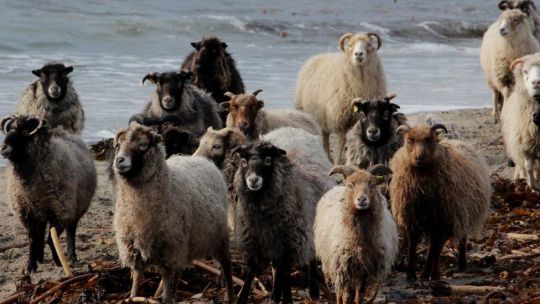
My second favourite are probably Herdwicks, a breed from the Lake District that are just so lovely looking
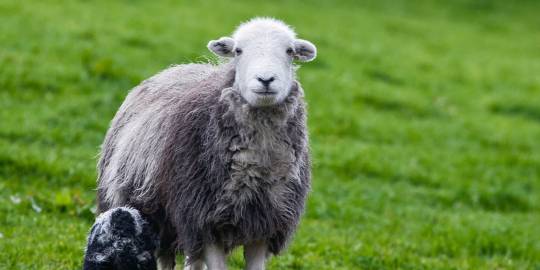
Their lambs are black and they go grey when they’re adults
my third favourites are Valais Blacknose because they’re just so cute.

And there are loads of other sheep breeds I love too, that’s just a top three.
secondly, sheep have contributed loads to human history. I read a fantastic book about it, but they’ve been there forever and they’ve been almost everywhere. They’ve basically shaped human history and it’s so interesting. And at the same time we’ve shaped them, humans domesticating sheep and breeding them has made them change and evolve in really interesting ways. It’s because of domestication that sheep need to be sheared, for example.
so yeah. Sheep are great
#thank you so much for asking#I love talking about sheep#they’re my favourite animal and people don’t know enough#or care enough#about them#sheep#sheeeep#the book is A Short History Of The World According To Sheep btw#one of my favourite books of all time#there’s so much interesting stuff in there
4 notes
·
View notes
Text
Green Space Dark Skies
Green Space Dark Skies
We all need a bit of beauty sometimes…. Get a cup of tea or coffee, sit back and relax for 30 minutes:
Oct 31, 2022
Green Space Dark Skies has journeyed across the UK from North Ronaldsay to Exmoor, from Giant’s Causeway to the Brecon Beacons, creating artworks in 16 stunning locations throughout the summer.
In September thousands of Lumenators travelled to the four highest mountains in the…
View On WordPress
#BenNevis#greatoutdoors#GreenSpaceDarkSkies#Orkney#outdoorartsevents#outdoorevents#ScafellPike#SlieveDonard#Snowdon#ukevents#personal
3 notes
·
View notes
Note
update: eridan and feferi are north ronaldsay sheep. thank you for your time, I may return with equius nep and tav should I find suitable sheep
ahh, good tiddings on your search (or however ye old people said good luck)
2 notes
·
View notes
Text
About North Sea, facts and maps
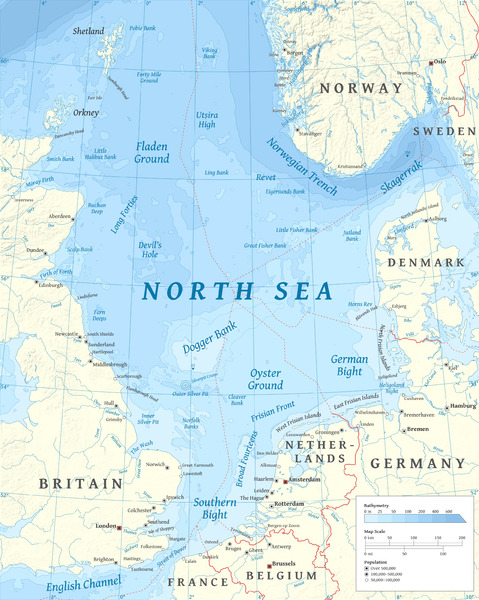
The North Sea (historically also known as the German Ocean) is a part of the Atlantic Ocean, located between Norway and Denmark in the east, Scotland and England in the west, and Germany, the Netherlands, Belgium and France in the south. The North Sea is one of the world's most important fishing grounds. The sea is also rich in oil and gas. Anthropogenic impacts have been significant for many years.
The North Sea is a body of water surrounded by the following countries: Norway – Vestlandet. Denmark – separating it from the Baltic Sea. Germany – the states of Schleswig-Holstein and Lower Saxony, with ports at Bremerhaven and Hamburg.
The North Sea lies between Great Britain, Norway, Denmark, Germany, the Netherlands, Belgium and France. An epeiric sea on the European continental shelf, it connects to the Atlantic Ocean through the English Channel in the south and the Norwegian Sea in the north. It is more than 970 kilometres (600 mi) long and 580 kilometres (360 mi) wide, covering 570,000 square kilometres (220,000 sq mi).
It hosts key north European shipping lanes and is a major fishery. The coast is a popular destination for recreation and tourism in bordering countries, and a rich source of energy resources, including wind and wave power.
The North Sea has featured prominently in geopolitical and military affairs, particularly in Northern Europe, from the Middle Ages to the modern era. It was also important globally through the power northern Europeans projected worldwide during much of the Middle Ages and into the modern era. The North Sea was the centre of the Vikings' rise. The Hanseatic League, the Dutch Republic, and the British each sought to gain command of the North Sea and access to the world's markets and resources. As Germany's only outlet to the ocean, the North Sea was strategically important through both World Wars.
The coast has diverse geology and geography. In the north, deep fjords and sheer cliffs mark much of its Norwegian and Scottish coastlines respectively, whereas in the south, the coast consists mainly of sandy beaches, estuaries of long rivers and wide mudflats. Due to the dense population, heavy industrialisation, and intense use of the sea and the area surrounding it, there have been various environmental issues affecting the sea's ecosystems. Adverse environmental issues – commonly including overfishing, industrial and agricultural runoff, dredging, and dumping, among others – have led to several efforts to prevent degradation and to safeguard the long-term economic benefits.
The International Hydrographic Organization defines the limits of the North Sea as follows:
On the Southwest. A line joining the Walde Lighthouse (France, 1°55'E) and Leathercoat Point (England, 51°10'N).
On the Northwest. From Dunnet Head (3°22'W) in Scotland to Tor Ness (58°47'N) in the Island of Hoy, thence through this island to the Kame of Hoy (58°55'N) on to Breck Ness on Mainland (58°58'N) through this island to Costa Head (3°14'W) and Inga Ness (59'17'N) in Westray through Westray, to Bow Head, across to Mull Head (North point of Papa Westray) and on to Seal Skerry (North point of North Ronaldsay) and thence to Horse Island (South point of the Shetland Islands).
On the North. From the North point (Fethaland Point) of the Mainland of the Shetland Islands, across to Graveland Ness (60°39'N) in the Island of Yell, through Yell to Gloup Ness (1°04'W) and across to Spoo Ness (60°45'N) in Unst island, through Unst to Herma Ness (60°51'N), on to the SW point of the Rumblings and to Muckle Flugga (60°51′N 0°53′W) all these being included in the North Sea area; thence up the meridian of 0°53' West to the parallel of 61°00' North and eastward along this parallel to the coast of Norway, the whole of Viking Bank is thus included in the North Sea.
On the East. The Western limit of the Skagerrak .
Why is North Sea so rough?
Because the North Sea is shallow, with an average depth of less than 328 feet, its waters can get choppy -- a result of tidal patterns and storms. While all this churning brings up nutrients to the surface that help its marine life thrive, it's not ideal for cruising outside of the summer months.
Which countries own the North Sea?
While most reserves lie beneath waters belonging to the United Kingdom and Norway, some fields belong to Denmark, the Netherlands, and Germany. Most oil companies have investments in the North Sea.
Can you swim in North Sea?
For example, the North Sea in the UK, which is on our doorstep, has very low sea temperatures, but that doesn't stop people from swimming in it. In fact, on the northeast coast of England, there are many beaches where you can swim in the icy water year-round!

Who owns oil in the North Sea?
The Norwegian and British sectors hold most of the large oil reserves. It is estimated that the Norwegian sector alone contains 54% of the sea's oil reserves and 45% of its gas reserves.
What is a North Sea danger?
The North Sea is one of the most dangerous seas in the world. It has wild storms and foggy winters. Because the sea is mostly shallow, the currents are strong and often pull in different directions. Even though the North Sea can be dangerous, it is important to trade.
Is North Sea a land?
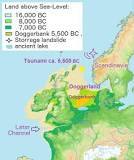
Doggerland is a submerged land mass beneath what is now the North Sea, that once connected Britain to continental Europe. Named after the Dogger Bank, which in turn was named after the 17th-century Dutch fishing boats called doggers.
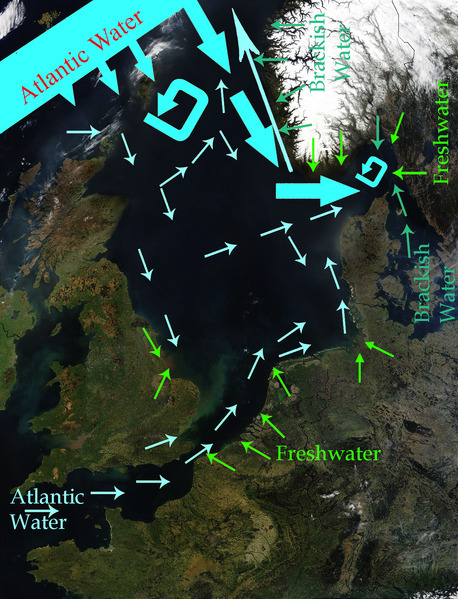
How warm is the water in the North Sea?
Unsurprisingly the sea is colder in the northern extremes of the sea where temperatures reach an average low of around 6 °C (43 °F). The warmest summer temperatures are seen to the south and can regularly reach 18 °C (64 °F) in August.
Is the North Sea very cold?

The waters of the North Sea are cold, ranging between 14 and 20 degrees C in the summer months. If you come from a country where the sea water temperature is above 22 degrees C all summer, and up to 26 degrees, it will be hard for you to swim in the chilly water of the North Sea.
How deep is the North Sea?
700 m
How much oil is left in North Sea?
"The waters off the coast of the UK still contain oil and gas reserves equivalent to 15 billion barrels of oil equivalent (boe), enough to fuel the UK for 30 years, but more investment in exploration is needed to slow down the decline in domestic production to safeguard the nation's energy security.

Does the North Sea have fish?

Today mainly mackerel, Atlantic cod, whiting, coalfish, European plaice, and sole are caught. In addition, common shrimp, lobster, and crab, along with a variety of shellfish are harvested.
Why is North Sea water brown?
When the water looks murky or brown, it means there is a lot of mud, or sediment, in the water. Sediment particles can be so tiny that they take a long time to settle to the bottom, so they travel wherever the water goes. Rivers carry sediment into the bay, and waves and tides help keep the sediment suspended.
Why do we sell North Sea oil?
Currently 80% of North Sea oil is exported because there is little demand from the country's refineries for UK crude oil. But even gas – where there is domestic demand – is sold overseas.
Does China own North Sea oil? Chinese investments in the North Sea
China National Offshore Oil Corporation, or CNOOC, has stakes in multiple North Sea oil fields including one of the UK's highest producers Buzzard. CNOOC has further stakes in Golden Eagle, and the combined platform which oversees the Scott, Telford and Rochelle fields.
Why is North Sea oil so important?
Over its lifetime, the North Sea has contributed approximately NOK 16.5 trillion ($1.82 trillion at the time of writing) in today's NOK to the economy. In 2021 alone, it made up 20% of GDP, 20% of government revenues, 20% of investments, and 50% of total exports.
What lives at the bottom of the North Sea?

Worms, crustaceans and shellfish live in holes and tunnels under the surface of the sea floor. If you look closely, you can identify quite a lot of life on the bottom: crabs and sea snails, such as laver spire shells and periwinkles, crawl around. Lots of other animals are attached to stones or ship wrecks.
Is the North Sea very polluted?
New research led by Cambridge earth scientists has documented heavy metal pollution along the North Sea coast over the last century. The study, published in the Marine Pollution Bulletin, used dog whelks collected from the Belgian and Dutch foreshores as a tool to identify changes in lead pollution over time.
What is the North Sea also called?

The North Sea (historically also known as the German Ocean) is a part of the Atlantic Ocean, located between Norway and Denmark in the east, Scotland and England in the west, and Germany, the Netherlands, Belgium and France in the south.
Is Atlantis in the North Sea?
While Plato's story explicitly locates Atlantis in the Atlantic Ocean near the Pillars of Hercules, location hypotheses include Helike, Thera, Troy, and the North Pole.
Is the North Sea salt water?
The salinity averages between 34 and 35 grams per litre (129 and 132 g/US gal) of water. The salinity has the highest variability where there is fresh water inflow, such as at the Rhine and Elbe estuaries, the Baltic Sea exit and along the coast of Norway.
Is the North Sea nice?

Seemingly endless beaches, chugging ships passing by, warm sand between your toes: The view of the North Sea landscape is impressive. So it's not surprising that many vacationers struggle to decide where to go on the North Sea. All the beaches have a unique charm there, yet some stand out in particular.
The North Sea is bounded by the Orkney Islands and east coast of Great Britain to the west and the northern and central European mainland to the east and south, including Norway, Denmark, Germany, the Netherlands, Belgium, and France. In the southwest, beyond the Straits of Dover, the North Sea becomes the English Channel connecting to the Atlantic Ocean. In the east, it connects to the Baltic Sea via the Skagerrak and Kattegat, narrow straits that separate Denmark from Norway and Sweden respectively. In the north it is bordered by the Shetland Islands, and connects with the Norwegian Sea, which is a marginal sea in the Arctic Ocean.
The North Sea is more than 970 kilometres (600 mi) long and 580 kilometres (360 mi) wide, with an area of 750,000 square kilometres (290,000 sq mi) and a volume of 54,000 cubic kilometres (13,000 cu mi). Around the edges of the North Sea are sizeable islands and archipelagos, including Shetland, Orkney, and the Frisian Islands. The North Sea receives freshwater from a number of European continental watersheds, as well as the British Isles. A large part of the European drainage basin empties into the North Sea, including water from the Baltic Sea. The largest and most important rivers flowing into the North Sea are the Elbe and the Rhine – Meuse. Around 185 million people live in the catchment area of the rivers discharging into the North Sea encompassing some highly industrialized areas.
Major features
For the most part, the sea lies on the European continental shelf with a mean depth of 90 metres (300 ft). The only exception is the Norwegian trench, which extends parallel to the Norwegian shoreline from Oslo to an area north of Bergen. It is between 20 and 30 kilometres (12 and 19 mi) wide and has a maximum depth of 725 metres (2,379 ft).
The Dogger Bank, a vast moraine, or accumulation of unconsolidated glacial debris, rises to a mere 15 to 30 m (50 to 100 ft) below the surface. This feature has produced the finest fishing location of the North Sea. The Long Forties and the Broad Fourteens are large areas with roughly uniform depth in fathoms (forty fathoms and fourteen fathoms or 73 and 26 m or 240 and 85 ft deep, respectively). These great banks and others make the North Sea particularly hazardous to navigate, which has been alleviated by the implementation of satellite navigation systems. The Devil's Hole lies 320 kilometres (200 mi) east of Dundee, Scotland. The feature is a series of asymmetrical trenches between 20 and 30 kilometres (12 and 19 mi) long, one and two kilometres (0.6 and 1.2 mi) wide and up to 230 metres (750 ft) deep.
Other areas which are less deep are Cleaver Bank, Fisher Bank and Noordhinder Bank.
Read the full article
#AretherewhalesintheNorthSea?#CanyouswiminNorthSea?#CanyouswimintheNorthSea?#DoesChinaownNorthSeaoil?#DoesitsnowintheNorthSea?#DoestheNorthSeagettsunamis?#DoestheNorthSeahavefish?#HowbigistheNorthSea?#HowdeepistheNorthSea?#HowmuchoilisleftinNorthSea?#Howmuchoilisleftintheworld?#HowwarmisthewaterintheNorthSea?#IsAtlantisintheNorthSea?#IsitNorthSea?#IsNorthSeaaland?#IstheNorthSeacold?#IstheNorthSeanice?#IstheNorthSeasaltwater?#IstheNorthSeaverycold?#IstheNorthSeaverypolluted?#IstheNorthSeawarm?#WhatcountryistheNorthSeain?#WhatisaNorthSeadanger?#WhatishappeningintheNorthSea?#WhatisspecialaboutNorthSea?#WhatisspecialabouttheNorthSea?#WhatistheNorthSeaalsocalled?#WhatistheNorthSeacalled?#WhatistheNorthSeaknownfor?#WhatlivesatthebottomoftheNorthSea?
0 notes
Note
Selkie AU question: Is Ian into celebrating Christmas or does it perplex him with him being a selkie?
New to the blog and don’t know what I’m talking about? The go ahead and check out my Doctor Who Whouffaldi selkie!AU: The Seal Man of North Ronaldsay! It’s on tumblr, FFN, and AO3.
If Ian's allowed to know what IRC and Skype are, then I think he’s allowed to know what Christmas is, lol, and besides, if the canon version of the Doctor loves [secular] Christmas, then his AU version’s allowed too

Long version, though, is that the thing about Human religions and supernatural/fantasy folk creatures is that a lot of people like to imagine that they are very separate, and that the dividing line is a hard, clear one. If that’s how someone wants to approach their writings of such beings, that’s fine and I have no problem with it. I do it myself. An alternative that I like to indulge every so often, however, in is having these fae and fantasy beings just sort of latching onto Human culture, with sometimes religion being included. If you think about Christmas, there’s plenty of the Northern Hemisphere/European-based traditions that can be traced to folk belief and pre-Christian indigenous religions. While I’m not going to get into the logistics and morality of absorbing other traditions like this (bc trust me when I say that people have canceled Christmas due to numerous perceived moral complications and I’m not here to poke that beast (other than to say fuck the Puritans)), I also am sort of obliged to point out that for the most part, the United Kingdom--and Scotland by extension--is a culturally Christian nation. What does that mean? Well, that even people who don’t consider themselves religious or Christian still do things like exchange gifts on Christmas and get the day off work and enjoy the traditional seasonal foods and all that. There’s too much long-term, latent Christianity in Scottish culture* for one to really think that it never got to the fae, especially one of their numbers who has walked amongst mortals before. The same can be said for other religion-influenced cultures as well! If the setting was strongly Jewish, then he’d likely casually observe holidays like Rosh Hashanah, or if it was a very Islamic area then it’d be about the varying Eids and customs around them, or something with a Buddhist flair for appropriate areas, so on and so forth. Fae are waayy too curious about mortals and their customs to not learn a thing or two about our religions and cultures. They might not always understand in the way that we do, but they’re not your grauntie who literally needs to wear a LifeAlert button just to go from her people-watching chair to get a glass of water in the middle of watching Judge Judy and still only has a touch-dial landline phone. I think the Fair Folk care capable of being more with-it than we all think.
-_-_-_-_-_-_-
*as well as Nordic culture, which had a heavy influence on the Orkneys, being that Norway owned them for a time and all, though that’s an interesting case considering how/when the Christianization of the Nordics compared to the Isles was just different enough to matter in how it permeated and presented itself within society but hey I’m no scholar just a weirdo with a lot of access to heavily-sourced wiki articles, loved reading history textbooks cover-to-cover as a kid, and a curiosity for learning about things I would never need knowledge of in my normal life if not for a single detail in a fic or answering an anon ask
#as both an American and a Papist hellion it is my duty to disrespect the Puritans at any and all occasion#those fckers are in my blood and yet my nation STILL suffers hundreds of years later via whitewashed propaganda#*deep breath*#ANYHOW#Whouffaldi selkie AU#Greyface replies#replies#Ian is an intelligent enough character I think he can figure out Christmas while still being amusedly baffled#Clara lets out a sigh of relief#everything is normal and lowkey
0 notes
Link
https://www.grahamrorie.com/we-have-won-the-land
https://www.facebook.com/rorymathesonmusic
https://www.facebook.com/grahamroriemusic/
https://rmgr.bandcamp.com/
https://open.spotify.com/album/4DyxqMZHHVI1qoMUoD8Wqm
0 notes
Text
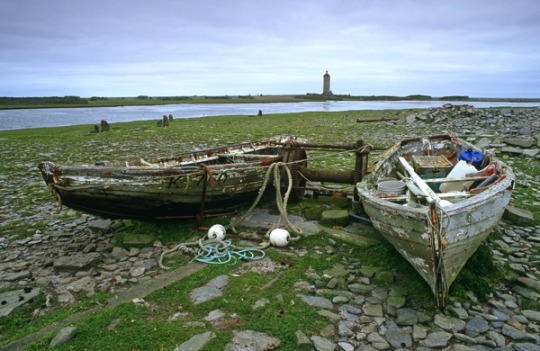
Old fishing boats on Orkney's northernmost island - North Ronaldsay
#Dennis Head#North Ronaldsay#Orkney Islands#Scotland#New Lighthouse#coastline#fishing boats#Dark Sky Island
8 notes
·
View notes
Text
Ordered some North Ronaldsay wool roving because the whole "seaweed-eating sheep" thing is honestly interesting to me.
2 notes
·
View notes
Photo

Scotland Fix of the Day: It's been many years since Ian Delyell took me out lobster fishing with him on North Ronaldsay in Orkney. It was a magical sight for a guy like me from a Midwestern farm, so otherworldly with seagulls squawking and Ian dropping lobster pots into holes only he knew about, navigating by triangulating the Dennis Head Old Beacon and the "new" North Ronaldsay lighthouse (built in 1852.) His boat was a North Ronaldsay Praam (or Pram), only used on North Ronaldsay, a very small island, by the way. They’re built with a particularly curved bottom so they can turn in their own length, thus getting into the tight spots that lobsters favor. And they are made so two men can beach the boat even when the kelp drifts high on the north shores. It made a pretty scene in the evening but it was seeing Ian's skill that was the real prize for me. #scotland #orkney #northronaldsay #lobster #fishing #island — view on Instagram https://ift.tt/jbr4mHQ
132 notes
·
View notes
Photo
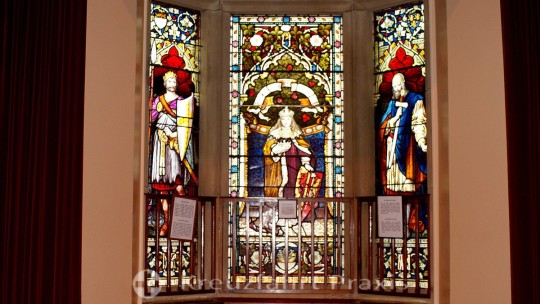
On September 26th 1290 Queen Margaret, Maid of Norway died, enroute from Norway to Scotland.
Margaret was called Queen but was never crowned. She was known as Lady of Scotland, Margaret of Scotland and the Maid of Norway. The story of her life is very poignant and short. She is widely considered to have been Queen of Scots from 1286 until her death in 1290, although title is disputed
Margaret’s claim to the Scottish throne came from her grandfather, Alexander III. Alexander had come to the throne at the age of 8 and had proved to be a very capable and strong monarch. It was his death at Kinghorn in March 1286 that set the chain of events in motion that led to Margaret being Queen and ultimately The Wars of Scottish Independence.
Alexander’s death, en route to be with his new young bride Yolande de Dreux, threw Scotland into chaos. Robert Bruce (grandfather of Robert I) and John Balliol both made claims for the throne, and to add to the confusion, Alexander III’s widow Yolande said she was pregnant. When her child miscarried or was stillborn, the Scottish Parliament appointed six guardians to look after Margaret.
The Scottish nobility called on assistance from Edward I of England in an effort to secure Margaret’s position. Edward arranged the Treaty of Birgham in July 1290. Under its terms Margaret, Maid of Norway was betrothed to his son Edward (later Edward II of England). In return Edward I guaranteed Scottish independence and agreed to act as ward for the young Queen Margaret.
In September 1290, Margaret set sail in a Norwegian ship from Bergen bound for Leith and accompanied by Bishop Narve of Bergen. Storms drove the ship off course to Orkney, and it eventually landed at what is now, St Margaret’s Hope, South Ronaldsay. Here Margaret, Maid of Norway, died, apparently from the effects of sea-sickness, still aged only eight. Had her marriage to Edward gone ahead, the crowns of Scotland and England would have been united some three hundred years earlier than they eventually were, in 1603. And three hundred years of bloody history would probably have been very different.
As it was, Margaret’s body was returned to Bergen and buried beside her mother, in the north side of the choir, in Christ’s Kirk at Bergen. Before her burial, her father King Eirik confirmed the identity of her body. This is significant because in 1300, a year after the death of King Eirik, a woman turned up in Bergen claiming to be Margaret. There was much popular support for her claim, despite the identification of Margaret’s body, and despite the fact that the woman appeared to be about 40 when Margaret would only be 17. The false Margaret was executed in 1301.
The death of the Maid of Norway in 1290 brought to an end the rule of the House of Dunkeld or the House of Canmore, which had started with the accession to the throne of Malcolm III in 1058. It also paved the way for two years of chaos, with 13 claimants for the Scottish throne having their claims assessed by Edward I of England. The Wars of Independence from England were just around the corner…
The Maid of Norway is central character in Lerwick Town Hall's wonderful series of stained glass windows featuring characters from Shetland's history.
20 notes
·
View notes
Text
Royal Mail set to expand use of drones for delivery to island destinations

A drone takes part in Royal Mail postal deliveries. Image: SWNS/courtesy of Royal Mail
Royal Mail is set to expand its use of drones for mail and parcel delivery to remote communities, subject to approval from the Civil Aviation Authority.
The delivery company has already tested its use of UAVs (uncrewed aerial vehicles) in four drone trials in the last 18 months – including to the Isles of Mull and Scilly and between Kirkwall and North Ronaldsay on the Orkney Islands. Now it plans to develop more than 50 drone routes, operated by up to 200 drones, over the next three years. Long-term, it aims to have more than 500 drones serving all corners of the UK.
Simon Thompson, chief executive of Royal Mail, says “On time delivery regardless of our customers location or the weather, whilst protecting our environment is our goal. Even though we go everywhere, Royal Mail already has the lowest CO2 emissions per parcel delivered, this initiative will help reduce our emissions even further.”
The latest trial was held last month on the Shetland Islands in partnership with logistics drone company Windracers Group. Royal Mail successfully delivered mail between Tingwall Airport in Lerwick to Unst, 50 miles away. Unst, with a population of about 630 people is Britain’s most northerly inhabited island.
The trial involved a twin-engine UAV has a wingspan of 10 metres and runs on an autopilot system. It can carry up to 100kg of mail on two daily return flights between the islands. Letters and parcels are then delivered from there by the local post.
Stephen Wright, chairman at Windracers Group, said: “The middle mile of supply and logistics, especially to remote locations, has long been overlooked by the industry and is ripe for innovation. We’ve spent the last five years focused on developing the most commercially viable essential logistics drones so we’re truly delighted to be working with Royal Mail on this ambitious and pioneering deployment of autonomous aircraft. It puts the UK firmly at the forefront of this exciting sector.”
The trial was part of the Sustainable Aviation Test Environment (SATE) project funded by UK Research and Innovation (UKRI) through the Industrial Strategy Challenge Fund. The Royal Mail says that lower-emission drones can help reduce its carbon emissions and will help to make its current island mail services more reliable, since they can currently be affected by bad weather.
0 notes
Text

The sheep of North Ronaldsay in Orkney have been living on the island as far back as the iron age and have evolved to eat a diet of mineral rich seaweed
The Orkney Sheep Foundation
#sheep#seaweed#north ronaldsay#scotland#orkney#seaweed sheep#love them#they chill with the seals it's beautiful
28K notes
·
View notes